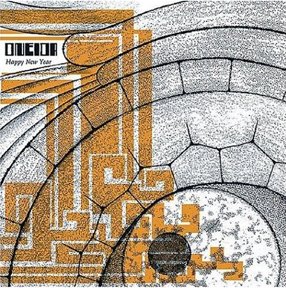 A Lazarus Taxon
A Lazarus TaxonThrill Jockey
Tortoise unwittingly symbolized the changing face of indie rock during the latter part of the Bill Clinton ‘90s. College kids and the liberal jet set didn’t have much to gripe about under Slick Willy’s administration; and they had money to blow on music that existed outside of the tried and true rock lexicon in the booming economy of yore. Seamless, instrumental post-rock was only a symptom of the times. In a round of ‘six degrees of Kevin Bacon,’ Tortoise’s infrastructure – an impressive crew compliment of John McEntire, Jeff Parker, John Herndon, Douglas McCombs, Bundy K. Brown, Dan Bitney and David Pajo – is omnipotent. As each member branched out into myriad other projects the indie rock masses where driven, as if by an unseen hand, to collect them all. If McEntire had
anything to do with it the twenty something’s bought it and loved it. This rapid expansion of the group’s bloodline could not have existed without the support of the obsessive and adoring record buying elite.
As a result, flipping the switch on these same socio-political factors that carried Tortoise to prominence explains the decline in the group’s popularity when the Bush blitzkrieg rolled over the US. Goodbye slick sophistication. Goodbye breezy, jazzy and free range experimentation. Hello Bright Eyes. Hello Interpol. Hello bands built on the sacred foundations of rock’s established best sellers.
A Lazarus Taxon rounds up Tortoise’s most obscure offerings, remixes and unreleased material. These are the gems that only the most dedicated of fans with lots of time and resources could heretofore track down and covet, including the much sought after
Rhythms, Resolutions & Clusters remix LP.
Until this 3XCD/DVD box came along much of this rare material had slipped through the cracks. Even the name
A Lazarus Taxon is a paleontological term that refers to species that disappear and reappear from extinction after having previously been thought to only exist in fossil records.
At full stride Tortoise wandered dangerously close to the realms of elevator music. “Madison Area” and “TNT Takemura Remix” rekindle that flighiness. But the clicks, drones, glitches, and rhythms found in “Blackbird” recall the funky and experimental meandering that gave Tortoise appeal in the first place.
Videos for “Four Day Interval” and “Galapagos” are reminders that no matter how good Tortoise can be, the music doesn’t translate to film all that well. The lack of any coherent narrative in the music resonates in the lack of any captivating images in the videos. On paper it sounds like it could work. But on the screen it becomes obvious that these films are best left to the mind's eye to direct.
One of the more intriguing aspects of this collection is its exterior. The box comes packaged in a series of stark, black and white photos taken by retired Swedish police car accident scene photographer Arnold Odermatt. Odermatt would shoot his assignments during the work day and then return, off the clock, to re-shoot the crash sites in various states of clean-up. This M.O. metaphorically sums up these alternate takes on some of Tortoise’s greatest works. As a whole these later takes are a poor substitution for these songs as they exist in there original state. Proper albums like
Tortoise,
Millions Now Living Will Never Die and
TNT are far more essential listens than
A Lazarus Taxon. But still, there is a beauty in the wreckage that’s visible only in the debris of these non-album tracks and happy accidents.
--Chad Radford




